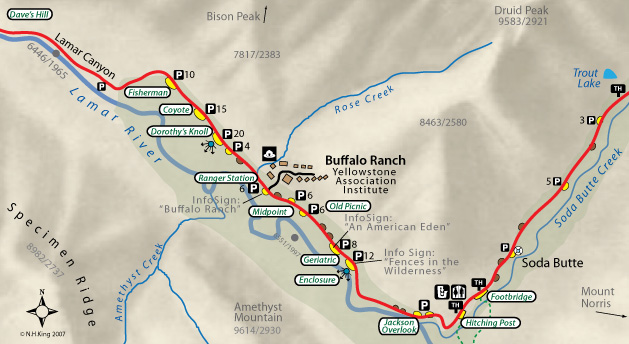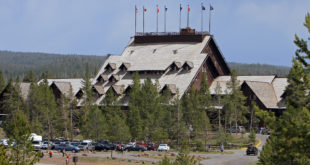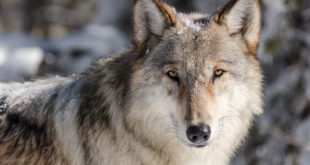The opportunity to see wolves is like so many other things: a matter of being in the right place at the right time. Wolf packs tend to follow the elk herds; elk herds move around during the year. During late fall, winter, and spring (roughly November through early June) the larger herds are in or near the major valleys:
- Lamar Valley – the best location, even in summer. Home of four major wolf packs.
- Hayden Valley – spotty sightings, but the resident pack has stayed near the road.
- Yellowstone Valley – distant packs in Hellroaring Creek, Blacktail Plateau are hard to spot
- Madison Valley – rare sightings
These areas have roads for convenient access. Of course, the valleys are big and neither the elk nor the wolves are necessarily standing in the open middle and in plain sight. Spotting wolves is still a matter of knowing where to look and some luck. Look for the bison or elk herds and then check the periphery for wolves.
In summer, the elk herds disperse into the high country, and the wolves follow. Seeing a wolf pack from the highway in summer is almost totally a matter of luck. Of course, you can go looking for elk and wolves. The Yellowstone Insider wolf pack map shows wolves in many locations, most of which can be reached by trail. However, spotting wolves in the wilderness is difficult; wolves avoid human contact. In short, spotting wolves in Yellowstone is uncommon, although by 2005 more than 150,000 people had reported seeing wolves.
Wolf sightings happen mostly to people who work at being in the right place at the right time. For example, you’ll see people lined up along the highway with their big zoom-lens cameras and high powered spotting scopes in Lamar Valley from late April to early June. They might wait hours, but they have a better chance of their patience being rewarded than anywhere else in the park. In fact, the Lamar area in late fall, winter, and spring is the best place in the world to see wolves in the wild. (See the map below for details of spotting locations in the Lamar Valley.)
Since the re-introduction of wolves in 1995, thousands of Wolf Watchers have gathered at pullouts along the N.E. Entrance highway in the Lamar and Soda Butte valleys. Wolf watching has become a significant tourist attraction, with a national and even international following. Bus and hiking tours of the wolf territories are gaining popularity, and wolf watcher websites on the Internet have become the place to get current information on sightings and other news of interest. Since the re-introduction of wolves in 1995, thousands ofWolf Watchers have gathered at pullouts along the N.E. Entrance highway in the Lamar and Soda Butte valleys. Wolf watching has become a significant tourist attraction, with a national and even international following. Bus and hiking tours of the wolf territories are gaining popularity, and wolf watcher websites on the Internet have become the place to get current information on sightings and other news of interest.
Above is an Animal Spotters Map of the Lamar and Lower Soda Creek Valleys. Named pullouts are used as references in sighting logs. Look for people already in position and (politely) ask about sightings. Please resist the temptation to head out into the sagebrush to get that immortal close-up, it can be dangerous and wandering humans spook the animals. Only the Hitching Post pullout (trailhead for horse parties going up the Lamar Valley) has toilets (old and overused). The nearest services or supplies of anything are in Silver Gate/Cooke City or at Roosevelt Lodge, about 20 miles either way, so bring your own goodies. One more thing, out here patience is the prime virtue.
Lamar Valley – Soda Butte Animal Spotting Locations P12=Parking area with 12 spaces.
 Yellowstone Insider Your Complete Guide to America's First National Park
Yellowstone Insider Your Complete Guide to America's First National Park






